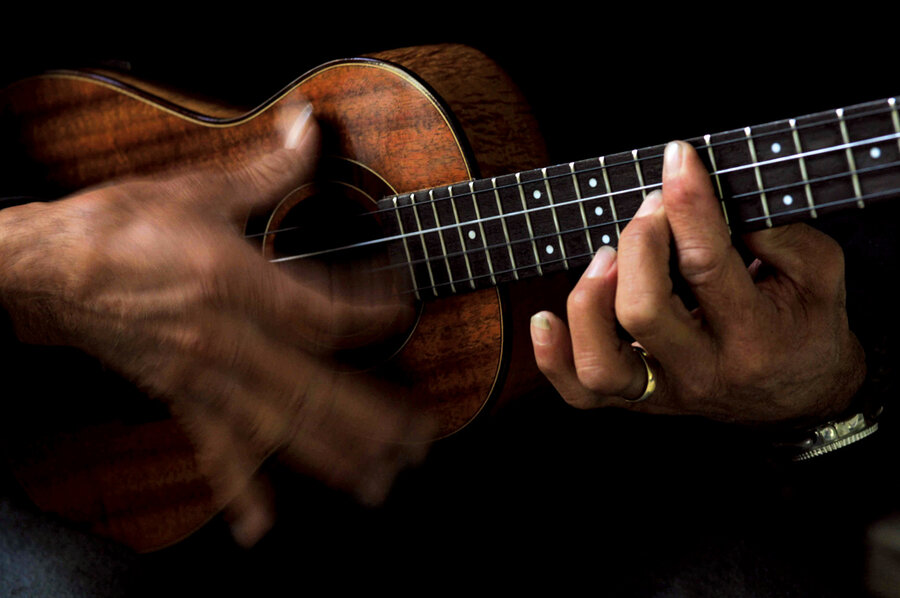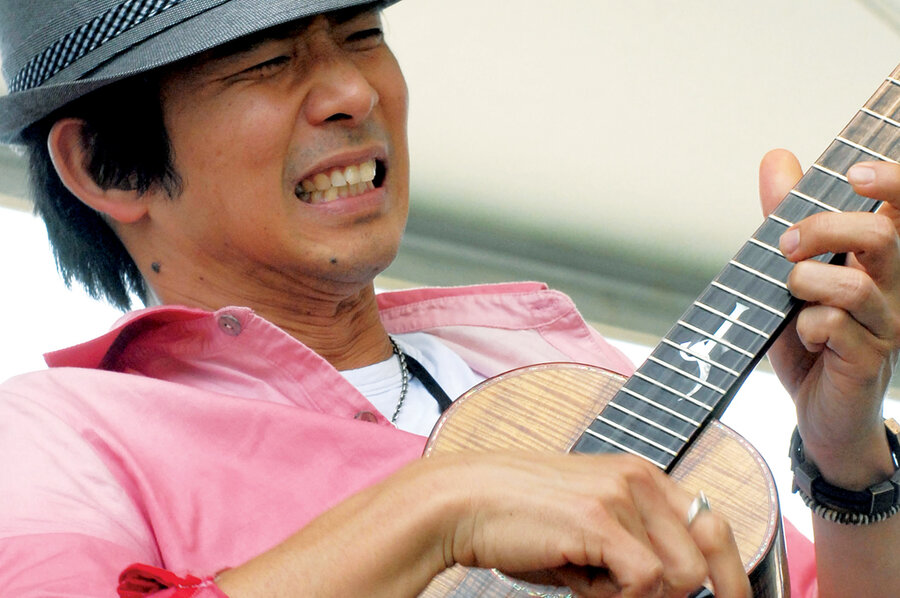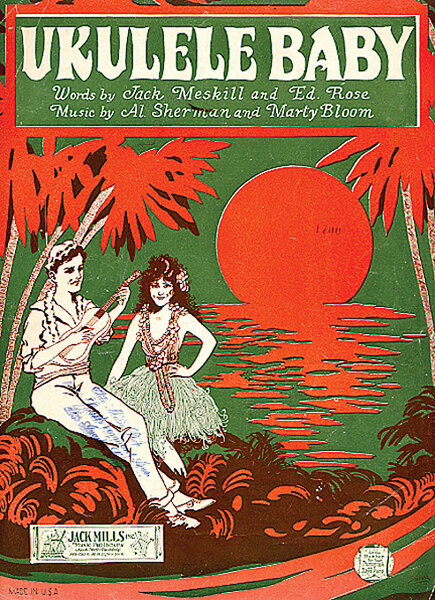Ukulele: The little guitar that could
| Chicago
Musical trends come and go, and only few return to stay.
Then there's the ukulele. We are now in what musicologists are calling the "third wave" of renewed appreciation for the tiny, four-stringed instrument that makes such a sweet, gentle sound. Ukulele sales are skyrocketing – on track to jump nearly 100 percent this year from the last, according to figures from the Lanikai brand, a division of Hohner Inc. – and the instrument is prominently featured on the pop charts and television commercials.
The instrument is not just a staple on college campuses. Groups dedicated to the instrument can also be found everywhere from senior centers to kiddie camps to local ukulele orchestras.
"We're in the infancy of this," says Drew Lewis, fretted division product manager at Hohner. "First we had the influencers. Now everybody is picking it up."
The first and second wave of ukulele popularity dates back to 1915, the year of the Panama Pacific International Exposition in San Francisco, which introduced Hawaiian culture to mainlanders. In subsequent years, the instrument became a staple of popular hits that came out of Tin Pan Alley during the Jazz Age. Jazz orchestras established the instrument as a mainstay of their sound, along with the lap steel guitar, another instrument the exposition popularized. Ukulele stars like Wendell Hall, the Hawaiian Quintet, the Duncan Sisters, and many others helped establish the instrument. The Depression helped usher the instrument into the home due to its cheap price. In time, an industry of instruction booklets and sheet music accompanied a creative renaissance for the instrument.
The ukulele's second revival emerged in the 1950s and continued through the Woodstock Era, through a series of movies that popularized tiki culture (think Elvis Presley's "Blue Hawaii," which featured the singer with ukulele in hand for most of the film). From television star Arthur Godfrey to cult warbler Tiny Tim, the instrument once again entered living rooms as a novelty instrument that could be easily played by anyone.
This current revival is different because it doesn't rely on any ethnic clichés, and novelty plays less of a role in the instrument's presentation. Instead, musicians are using the instrument to add their own flavor to pop hits, hone a style of playing that may have more nuance than guitar, or add profundity to lyrics.
"People see the ukulele and think it's simple but there's far more going on there," says musicologist Daniel Goldmark, who teaches at Case Western Reserve University in Cleveland.
Mr. Goldmark refers to songwriters like Stephin Merritt of the Magnetic Fields and Nellie McKay as examples of musicians who use the ukulele for songs that seem to go deeper than, say, Tiny Tim's "Tiptoe Through the Tulips." Their wry lyrics become disarming when accompanied by gentle strums and high-octave tunings.
"The thing about the instrument for them is it has no genre association with the guitar. It's complex enough [that] you can do anything you want with it, but at the same time, it's very simple. For songwriters, I imagine it's a great [instrument] to work through things," he says.
Paul McCartney is known to play one in concert in tribute to late band mate George Harrison, an aficionado of the instrument. Mr. Harrison can be seen playing a ukulele with Mr. McCartney and Ringo Starr in "The Beatles Anthology," the group's 1994 television miniseries. In concert, McCartney plays the Harrison song "Something." This summer, the ukulele revival was stoked from unexpected quarters: Pearl Jam lead singer Eddie Vedder, who launched a national tour based on "Ukulele Songs," a 16-song solo album that contrasts the instrument's cheery sound with songs infused with brooding and romantic longing. In May, Mr. Vedder told The Boston Globe that a primary challenge of making the album was "not necessarily [to] make this sappy little instrument sound evil, but to give it something that wasn't chipper."
What is also making this current revival different from the first two is YouTube. The online video-streaming site is allowing bedroom players to upload videos of them trying their hand at the instrument and it has already resulted in a bona fide ukulele star: Hawaiian musician Jake Shimabukuro, whose virtuoso renditions of familiar songs (most notably, Harrison's "While My Guitar Gently Weeps") is credited for boosting the trend. A stirring rendition of "Over the Rainbow" by late Hawaiian star Israel "Iz" Kamakawiwo'ole has piled up tens of millions of YouTube views. [Editor's note: The original version incorrectly stated that Jake Shimabukuro was Japanese.]
Legions of amateurs have been inspired by the relative ease of mastering the basics of the ukulele – and then sharing the results.
"I became obsessed with it," says Jessica Day, a marketing professional in Milford, N.J., who picked up the ukulele two years ago after graduating from college simply "to pass the time." She now regularly uploads videos of her playing her favorite songs, from artists like Coldplay to Taylor Swift, in front of her computer.
For her, the instrument "has such a beautiful sound. It is very peaceful and calming.... Every time I'm hanging out with friends, I pull it out and play for them," she says.
The ukulele seems to encourage community, either online or in person. Festivals and clubs have been launching across the United States to bring players together in a spirit of musicianship, but also to share their passion in workshops and performances.
The Milwaukee Ukulele Club started three years ago out of a private home and now boasts 200 members on Facebook and an annual festival, held this year on Sept. 24, that attracts over 300 people.
Milwaukee musician and club founder Lil' Rev, who writes books on the ukulele for the Hal Leonard music publishing company, says organizing around the instrument is common throughout the US.
"The time was right for people to empower themselves with the act of being a participant, rather than a consumer, in the culture we live in," he says.
Club members range from college students to retirees, Rev says, and their interests are just as varied. Some simply want to learn a favorite song, others want to hit new heights in performing. Both approaches are validated when the club gets together. The ukulele "almost has a punk rock vibe to it," he says. "It's an Everyman instrument. Everyone can [play] it."







